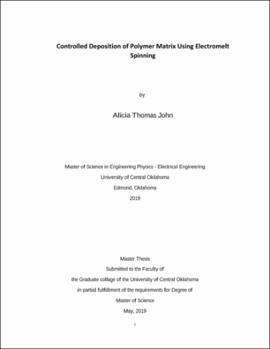| dc.description.abstract | Electrospinning is a widely used technique to produce fibers from polymer solutions using high electric field. With its simplicity and low-cost, all kinds of polymers can be processed using this technique. But there is a limitation to produce precise 3D structures and inability to control the pore size and non-uniformity. There is an alternative approach called melt electrospinning, which is a processing technique to produce fibers and fibrous structures from polymer melts in the range of micrometers to millimeters. Electromelt technique is solvent-free and can build precise and uniform scaffolds with pre-determined pore size. The efficiency of both processes depends on the instrument parameters and solvent properties: fiber diameter, uniformity of the fibers, solution viscosity, flow rate, tip to collector distance, ambient parameters. The goal of this study is to compare the morphological and biological characteristics of the 3D scaffolds produced from electrospun and electromelt technique. There are three objectives for this study. The first objective was to produce 3D scaffold using the electrospinning process and analyze the scaffolds morphologically. The polycaprolactone (PCL) scaffolds were produced using the electrospinning system. The second objective was to develop a melt electrospinning system using Newport actuators for controlling the scaffolds in the three dimensions within the range of 100 to 500 microns and its morphological analysis. Obtaining the desired precise movement using the actuators and selecting a suitable flow rate determines the feasibility of the system. The system was tested using a custom-made Arduino programmed stepper motor syringe pump system, which controls the ejection of fluid to maintain constant flow rate, preventing the formation of any non-uniformities. The area roughness, height, pore size and fiber diameter of the structures were analyzed under SEM and Profiler. The third objective was to compare the morphological characteristics of the results from both electrospinning and melt electrospinning. This study successfully developed an electromelt system that can produce rectangular and cylindrical PCL scaffolds with consistent porosity. From the morphological analysis using SEM and profiler, the scaffolds produced from electromelt process has observed to have very precise porosity than the electrospun process thus concluded that melt electrospinning is more efficient technique to produce 3D scaffolds. From the in vitro cell analysis of the scaffolds produced, the cells were able to attach to the scaffolds very easily and observed a noticeable growth of cell, proliferation and infiltration through the pores as the end-product is applied for bio-medical applications. Thus electromelt can provide a consistent solution to the problems of electrospun. | en_US |
